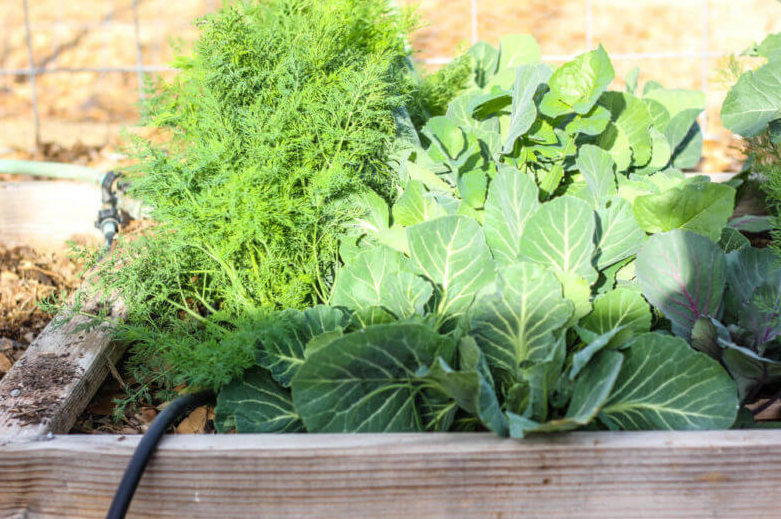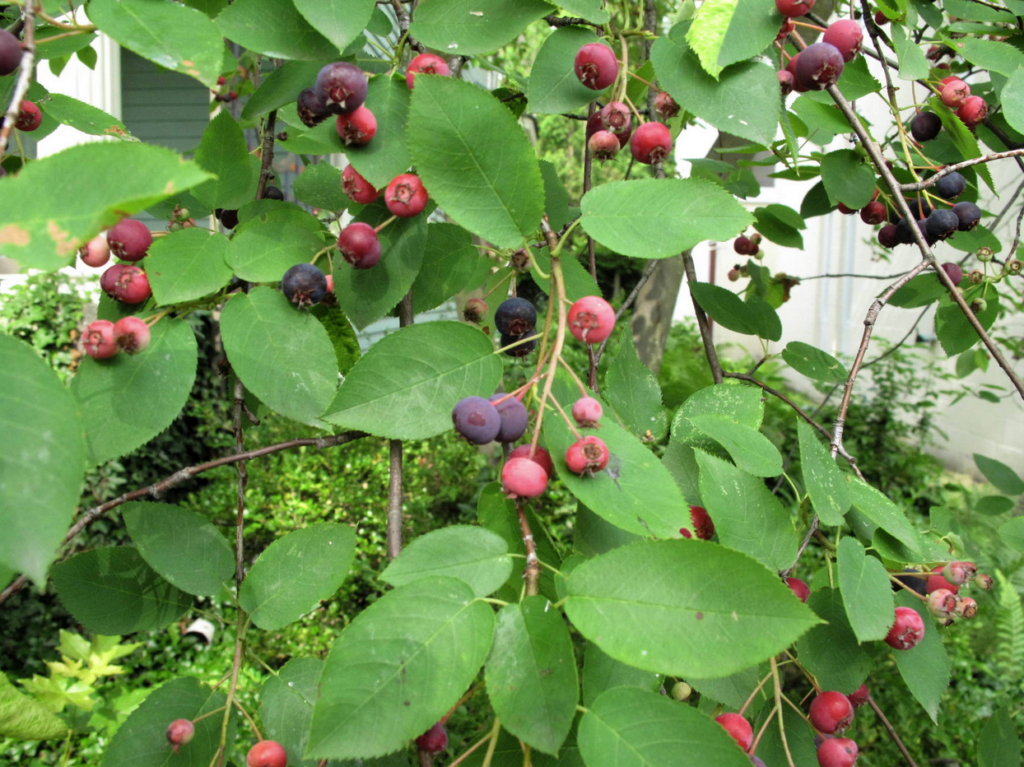Editor’s note: Our good friend, Artemisia Gentileschi, shared this with us.
As the “interesting times” continue, more and more people are looking to grow some food for themselves. If you live under the control of a Home Owners Association, you may have limited options for starting a garden due to the restrictions. Some cities even have ordinances against food gardens in the front yard. The point of this article is to give some options. Don’t give up hope just yet.
Just because you aren’t allowed to have a “garden” doesn’t mean you cannot grow some food. Of course growing a lot of food in a small suburban yard isn’t really on the radar, especially with a nosy, controlling HOA, but you can do some undercover food gardening.
You best option: Move. Now. Get out of the city. Okay, not everyone has that option. Lots of people have the jump on it and home prices are going up outside cities (at least they are around here). So, make it a goal and have other plans in the meantime.

Success in gardening comes from paying attention. The first step in any gardening situation is to examine where you want plant things. Track the sun — which areas are shade, partial-shade, or full sun. Does it change from season to season? The further north you are, the more change from winter to summer. The north side of my house gets zero sun for nine or ten months of the year. In the absence of a grow light, south facing windows are necessary for seed starting around here. Next, check your growing zone (USDA site is a good start). You don’t want to buy perennials and have them die because they just don’t survive in your zone. Do you have a secluded spot in your backyard for stealth gardening?

The busybody HOA head is going to say “gardens don’t look pretty”. Fine. But see what you are allowed to have. Can you have trees? Perennials? A flower bed? Containers? Check the bylaws carefully. If you can have any of those, you can grow some food. If you can plant trees, what’s the difference between an ornamental pear or cherry and their more edible varieties? They all drop fruit and your HOA board may have no idea which is which. You can plant a tree guild around the tree with things like herbs and flowers that grow well in partial shade. If you can have perennials, you might get away with asparagus. Most people have no idea what it looks like after it’s grown out of the phase that we eat. It’s tall and feathery and a fine backdrop tucked in the back of a flower garden. Asparagus won’t work in more tropical climates, but why not some moringa? It’s a healthy green in tree form. There are a lot of nice looking plants that you can tuck in a perennial or flower garden. Sweet potato is a very pretty plant, available in bush or vine form. There are even varieties that will do fine in the more northern areas. You can eat the leaves and of course the tuber. Unlike most of the food options, it is a high calorie crop and stores well. Even a lot of flowers are edible, like nasturtiums.

Here are some options of nice looking edibles:
Fruit trees: Cherry, pear, apple, apricot, peach. There are varieties of each for practically any zone. It’s hard to hide non-ornamental larger fruits though. I find pears to be more forgiving when it comes to getting a crop in the presence of pests and diseases. Everbearing mulberry varieties will give you tasty berries just make sure it isn’t “too messy” and keep it pruned. If you have established ornamental varieties already established, you can graft edible varieties on to it.

Berries: Serviceberries in flower are absolutely beautiful in the spring. Get an edible version. Some varieties get tree size, some stay bush sized. If you have existing ornamental berry bushes, maybe tuck a blueberry bush in the mix (again, best variety varies greatly by USDA zone so study what’s best for your zone). I wouldn’t try brambles (raspberries and blackberries) unless you have a hidden area. They’re too big, obvious and can just get out of control. That said, there are some dwarf, very low bush shaped raspberry varieties available that might work for your situation.
Nuts: You could try hazelnuts and chestnuts. Not a nut, but American Groundnut is a legume with a good amount of protein and it’s a nice looking vine that flowers. And it’s a native plant to boot (from Ontario to the Gulf of Mexico). Another not nut, but pretty are sunflowers. Harvest the seeds for some good protein.

Grains: Amaranth is pretty but harvesting is a pain. You could grow some popping sorghum. It looks like ornamental grass.
Vegetables: For greens, look for pretty varieties. Lots of colors are available. Don’t put lettuce or mustard or spinach in a row. Row planting will get you busted. Mix it with flowers, some onions and leeks, peppers. Hey, they’re ornamental peppers! Going for things like melons and winter squash might be pushing it (too obviously food), but okra flowers are very pretty. Plant some collards and call it ornamental kale. Some savoy cabbage varieties are quite pretty with red streaks. (Again, call it ornamental kale). For cucumbers, the best (as in not obviously food) bet would be Mexican Sour Gherkin or Cucamelon. The cucumbers are around an inch long and it has the cutest little yellow flowers on climbing vines. You can tuck beets here and there easily (especially varieties like Bull’s Blood that are all red). There’s even an ornamental variety of corn (for grinding for corn meal) that is striped – the whole plant is striped. Swiss chard is another green that comes in every color of the rainbow. I wouldn’t boldly try tomatoes. They’re just too recognizable. That and beans (your best best would be Scarlet Runner Beans – an ornamental bean but still edible) are for secret tucked away places. You might be able to get away with a dwarf variety in containers on your back deck. If they are very, very strict, you may be able to do a lot with container gardening, just not in the front yard.

Perennials: Asparagus, lots of herbs (which are in very high demand right now) like thyme, sage, rosemary, marjoram, chives and garlic chives, oregano to name a few. A lot of them flower as well. Check out your options for your zone.
Tea and medicinal plants: Chamomile (both annual and perennial) have very pretty flowers, Lemon Balm, roses for the rose hips (some varieties are grown just for hips), Elderberry bush, thyme is a medicinal plant too – probably why chicken soup really is healing. If you’re in warmer areas, you can grow your own tea plants.
Flowers: Nasturtiums, calendula, borage, hostas, violets, bachelor’s buttons.
These lists are not at all exhaustive. It’s just a starting point. Find what works for your area and get planting. A word to the wise on where to buy plants: big box stores don’t seem to care if the variety they have is actually best for your area. Look local for sources of trees and perennials. A lot of the perennials listed above can be grown from seeds as well.

If you really can’t get away with anything, check with friends who aren’t under the same level of tyranny. They may lend you some space in their garden, check out community garden options in your area, or just buy from friends who have extra. They just might pay you to take some zucchini.
If the primary concern of the HOA is how it looks, you’ll probably be fine if you take care of it well, keep it weeded and mulched, and healthy (and pruned in the case of a tree) and avoid the obvious vegetable garden style rows. If anyone asks “what’s that?”, just include ornamental as an adjective and keep tabs on house for sale sites, keeping in mind it’s easier to ask forgiveness than permission. Or run for HOA dictator, er… director.
_____________________________________
For useful gardening information visit The Survival Gardener.
Or check out David The Good on YouTube.










Great ideas. Thanks for putting it all in one place to reference! The good thing for sneaky gardeners (and an alarming thing for society) is a lot of people don’t even know what food looks like. A friend’s HOA had actually planted rosemary and sage bushes in the public areas, but when I asked people about it no one even knew that is what they were. Covert food.
I forgot an important medicinal. Echinacea is also known as purple coneflower. A lovely perennial flower native to the U.S., all the Echinacea species have the medicinal properties.